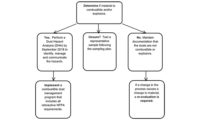NFPA 660: One combustible dust standard to rule them all
Answers to common questions about the upcoming changes

Photo credit: Getty Images
The National Fire Protection Association (NFPA) is in the process of clarifying and consolidating all combustible dust standards into a single standard. Currently designated as NFPA 660: Standard for Combustible Dusts, the all-encompassing standard will be completed in 2024 and likely released in late 2024/early 2025. Though still two years away from implementation, it’s not too early for facility owners and operators to gain an understanding of what the new standard is designed to provide and accomplish and what will happen to the information in NFPA 652 and other current dust standards, all of which will go away upon NFPA 660’s release.
NFPA 652 is one of six current combustible dust standards that outline requirements for handling various types of dust (additional NFPA documents provide design requirements for equipment and facilities). As its full name denotes, NFPA 652: Standard on the Fundamentals of Combustible Dust is the standard for dust basics and is a good starting point for combustible dust standards, best practices, and the requirements for a dust hazard analysis (DHA). The other five standards, all of which are commodity-specific, are:
- NFPA 61: Standard for the Prevention of Fires and Dust Explosions in Agricultural and Food Products Facilities
- NFPA 484: Standard for Combustible Metals
- NFPA 654: Standard for the Prevention of Fire and Dust Explosions from the Manufacturing, Processing, and Handling of Combustible Particulate Solids
- NFPA 655: Standard for Prevention of Sulfur Fires and Explosions
- NFPA 664: Standard for the Prevention of Fires and Explosions in Wood Processing and Woodworking Facilities
These commodity-specific standards provide additional requirements/guidelines for production facilities handling a particular type of dust. This information is critical because recommendations and requirements that are beneficial at one facility—to prevent fire, deflagration, or explosion—could be detrimental at another facility that processes different materials (e.g., materials that may be water-reactive). By updating and consolidating these standards and NFPA 652 into the new 660 standard, the NFPA’s goal is to create one document that provides improved consistency among, and easier access to, all dust-related information.
The beginning chapters of NFPA 660 will provide the updated content from NFPA 652, with the information from the commodity-specific standards covered in distinct, subsequent chapters. Any current conflicts between NFPA 652 and the commodity-specific standards will be resolved, questions on enforcement will be clarified, and annexes from all the current standards will be transferred to the annex section of 660. NFPA 660 also will be formatted for easier navigation between the dust fundamentals and the commodity-specific requirements (e.g., same subheadings for all chapters, etc.). The consolidation also will sync all updates to the different sections of the standard so that they are on the same revision schedule.
While much it yet to be finalized, following are answers to common questions about NFPA 660.
Will there be an opportunity to review the proposed new standard before it is released?
Public input on NFPA 660 ended in early January 2023, and the standard as it now stands is being reviewed by committee members. At some point the document will open for public comment and then will be reviewed again by the committee before its adoption and release in late 2024/early 2025. Between now and the standard’s release, many changes are likely to be made to the document based on the public input and comments.
What is currently known about significant content changes expected to be made to NFPA 652 and the commodity-specific standards?
At this point, there isn’t anything substantial to note. As of the first iteration, there were some changes related to consolidation of the standards, but nothing drastically changed between the standards currently in place and the new content of NFPA 660. NFPA mostly took the existing standards and consolidated them into one document and organized that content to make it cohesive across the standard. As noted above, a few more iterations of the standard can be expected between now and when it is finally released.
What effect will NFPA 660 have on the design of dust collection systems?
Current and future NFPA dust standards, along with industry best practice, are instrumental for dust collection systems and their design. According to the NFPA, however, these standards are the “minimum requirements to safeguard a system.” A dust collection system is also subject to local codes and other standards (International Mechanical Code, NFPA 91, OSHA requirements, etc.). In addition, per NFPA standards, a DHA must be completed for all new and existing processes and updated every five years. During the update process, any changes to the system should be reviewed and documented. The DHA review process also is a good time to re-evaluate a system under the current standards and best practices. Overall, the consolidation effort of 660 will make design considerations clearer regarding specific materials since the information will no longer be spread out across six different standards.
Do Owners/Operators need to take any action now?
At this point, there is nothing Owners/Operators need to do. Once NFPA 660 takes effect, authorities having jurisdiction (AHJ) will start to enforce the new standard instead of the previous standards. Until that time, however, the existing standards will continue to be enforced by AHJs. AHJs can include local city building or fire inspectors, insurance companies, or OSHA. Although the current combustible dust documents and new NFPA 660 are standards, the AHJ can enforce the requirements outlined in 660 and will use the new standard as a guide for compliance.
To keep up with the latest information on the development of NFPA 660, visit nfpa.org.
Looking for a reprint of this article?
From high-res PDFs to custom plaques, order your copy today!






